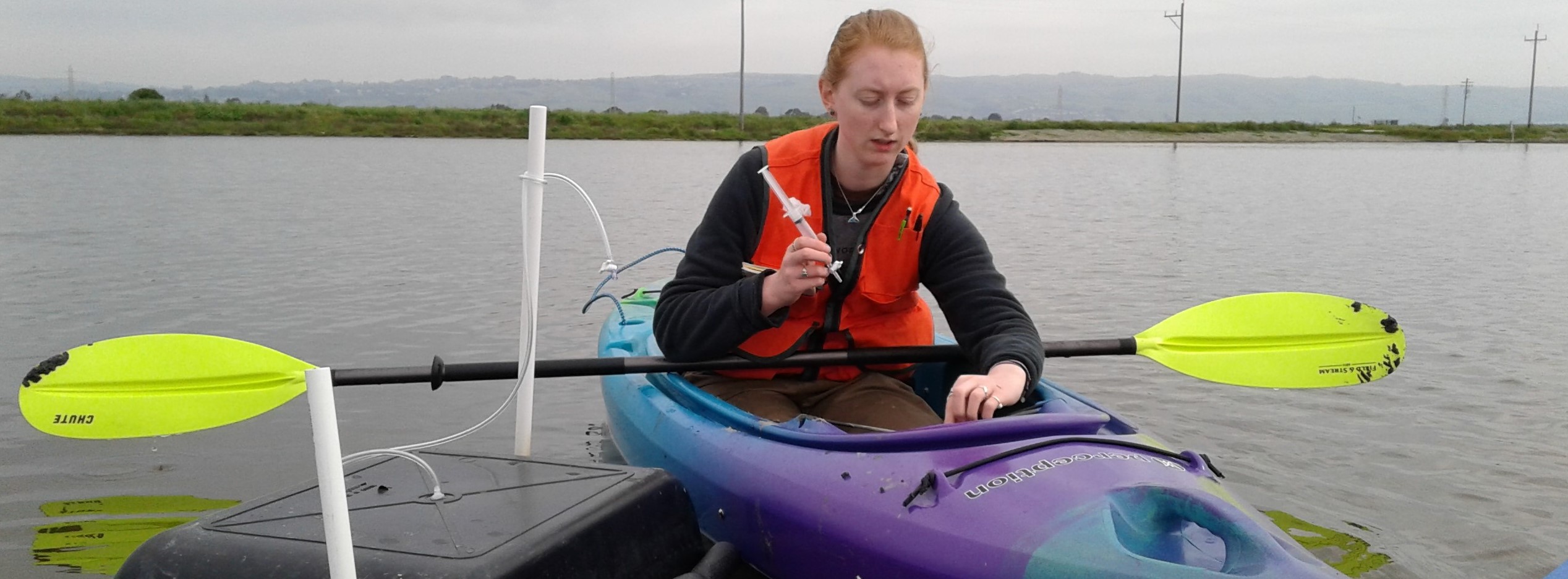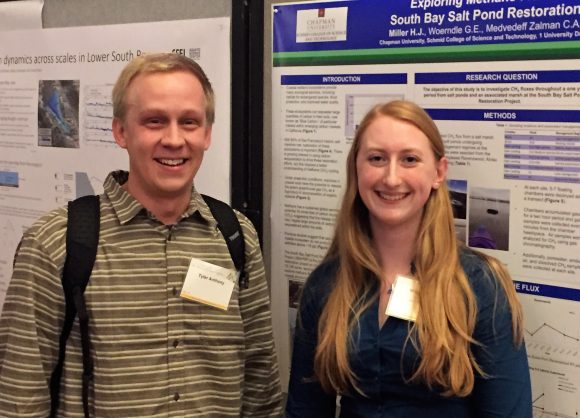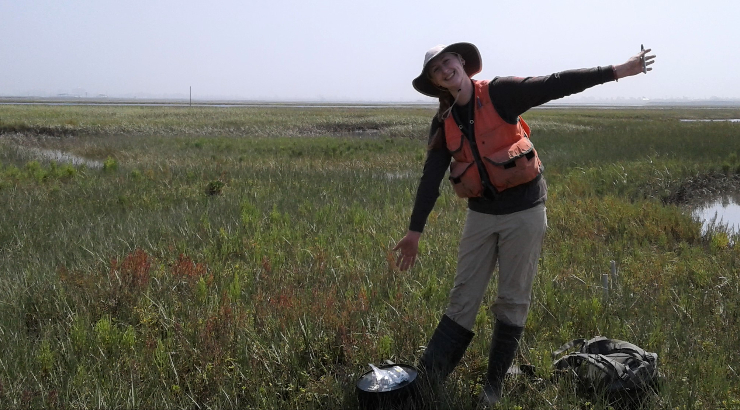When senior Haley Miller ’17 loads her Chapman University kayak full of research equipment and paddles out into the coastal wetlands of Orange County, she marvels at the contrast between her quiet world and the bustling highway nearby.
“It’s really peaceful. You see the cars that drive by the overpass and you think about all the people going on with their busy lives and you imagine they don’t know how these ecosystems impact them,” Miller says.
But her work in the wetlands may ultimately have a hand in changing such perceptions. Because her trips into the marshes within the Seal Beach National Wildlife Refuge are not pleasure jaunts. They’re connected to a multi-agency grant aimed at measuring greenhouse gas emissions, information critical to assessing the marshes’ potential role in a carbon market.
Chapman’s share of the grant is one piece of a multi-agency and multi-university research effort looking at the ecosystem that straddles the western edge of the county. But there’s nothing slight about the opportunity to be part of such meaningful research, says Miller, an Environmental Science and Policy major.
“It’s innovative, and it feels like I’m on the cusp of something that could go down in history, which is cool. But at the same time, it’s sort of uncertain because we don’t know all the impacts yet,” says Miller, who graduates a semester early this December.

The project aims to answer those questions and provide data that could help policymakers turn those muddy soils into treasure, of a sort. And we’re not talking about the rich habitat the marshes already provide for wildlife.
Rather, think carbon credits, says Jason Keller, Ph.D., associate professor in the Schmid College of Science and Technology, and a principal investigator on the project.
“From an environmental point of view, we want to restore and conserve wetlands anyway. But now there may be a financial incentive, too,” Keller says.
Scientists know that wetlands capture carbon, a natural function that helps offset greenhouse gases, a factor in global climate change. Wetlands do this by drawing carbon dioxide out of the air, turning it into plants, which eventually turn into soil carbon that stays put almost indefinitely, through a process called sequestration.

Wetlands also naturally release varying degrees of methane and nitrous oxide, important greenhouse gases that could offset the carbon stored in soils. But if those emissions are minor, valuable climate benefits from sequestration remain. Industries could, in theory, purchase wetland carbon credits to counterbalance the greenhouse gas emissions they can’t allay by prevention or other green practices.
Where would the money go? Back into wetlands in the form of habitat restoration projects.
“The potential is that you can use the wetlands’ climate benefits to pay for restorations of these environments. It could be a real win-win for everyone,” Keller says.
First, though, is the task of measuring the greenhouse gas emissions. Leading the management of that field sampling is Miller, along with Glenn Woerndle, a research associate in the Schmid College of Science and Technology. Woerndle began work on the project more than a year ago, and Miller joined her this June.
Each researcher earned special access to the Seal Beach refuge site after completing safety training, and now make regular field visits, placing collection chambers throughout the wetlands, including areas already undergoing restoration.
Back in the Chapman Wetland Biogeochemistry Laboratory, they run analyses on the air and water samples and compare gas content between the restored and natural sites. The sampling will continue through August; the researchers expect to report their results by the end of 2018.
The pair also manage a similar investigation at the South Bay Salt Ponds Restoration Project near San Francisco, a collaborative project with numerous partner agencies.
The South Bay project was also the subject of Miller’s Summer Undergraduate Research Fellowship (SURF) Program supported by Chapman’s Office of Undergraduate Research and Creative Activity. SURF fellows receive funding to pursue a variety of research and creative projects, with faculty guidance.

In addition, Miller presented preliminary reports on the work at the State of the Estuary Conference held this month in Oakland and at the Southern California Academy of Sciences Annual Meeting held in April in Santa Monica.
Miller looks forward to seeing the conclusions for both projects, but they won’t be the only takeaway. The opportunity to manage significant research as an undergraduate and in a somewhat overlooked habitat is matchless, she says.
“Wetlands historically have been removed from us as humans. We have dredged and drained a lot of them, so I think people aren’t familiar with them,” she says. “But these ecosystems are really unique. They have a lot of wildlife unique to them. We see a lot of that out there. And I feel really lucky to be a part of that.”







Are wetland system help to errands away from climate change sea levels alote of it ocean it is a nesurary for them